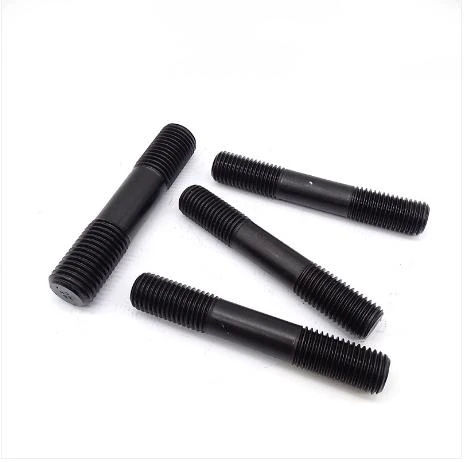

M20 Threaded Rod Specifications and Applications for Fastening Solutions
Nov . 09, 2024 11:34 Back to list
M20 Threaded Rod Specifications and Applications for Fastening Solutions
The Versatility of M20 Threaded Rods A Key Component in Modern Engineering
When it comes to construction and engineering, the importance of fasteners cannot be overstated. Among these, the M20 threaded rod stands out as a crucial element used in various applications. Its robust design, combined with its adaptability, makes the M20 threaded rod a favorite among engineers and builders alike.
What is an M20 Threaded Rod?
The M20 threaded rod is a cylindrical metal rod with a diameter of 20 millimeters, featuring continuous threads along its length. The designation “M” signifies that it is a metric size, adhering to international standards for manufacturing and specification. These rods can be made from various materials, including steel, stainless steel, and even plastic composites, depending on the requirements and environment of the application.
Material Selection and Strength
The choice of material for an M20 threaded rod plays a critical role in its performance. Steel rods are the most common due to their strength and durability. Coated steel rods, such as those galvanized for corrosion resistance, are often used in outdoor applications or in environments prone to moisture. Stainless steel rods, known for their resistance to rust and corrosion, are ideal for marine applications or areas with high humidity. Each material offers distinct advantages that cater to specific engineering needs, ensuring the longevity and reliability of the connection.
Applications in Construction
M20 threaded rods have a wide range of applications in construction and engineering projects. They are often used as anchor bolts in foundations, ensuring that structures are securely held in place. In industrial settings, these rods can be employed to support machinery, providing stability and strength. Additionally, M20 threaded rods are frequently utilized in the assembly of steel frameworks, acting as tension members that keep components firmly attached.
m20 threaded rod

Versatility in Design
One of the key attributes of the M20 threaded rod is its versatility. These rods can be cut to length and adapted to various configurations, making them suitable for both intricate designs and straightforward applications. Their ability to provide adjustable tension means they can accommodate fluctuations in load and stress, thus improving the resilience of a structure.
Moreover, the use of nuts and washers allows for quick installation and disassembly. This is particularly beneficial in temporary setups, such as scaffolding or event structures, where components need to be frequently assembled and disassembled. The ease of use of M20 threaded rods contributes significantly to their widespread adoption in the industry.
Installation Techniques
The installation of M20 threaded rods requires precision and care. Proper alignment is crucial to ensure the effective transfer of load and to avoid undue stress on the components. Depending on the application, techniques such as drilling into concrete, using epoxy, or employing expansion anchors may be utilized to secure the rods effectively.
Torque specifications must also be observed during installation to ensure that nuts are sufficiently tightened without over-stressing the material. Engineers often refer to standardized tables providing torque values relevant to the specific material and thread pitch to maintain safety and structural integrity.
Conclusion
In conclusion, the M20 threaded rod is a vital component in modern engineering and construction. Its strength, versatility, and ease of installation make it indispensable for a myriad of applications, from residential buildings to industrial facilities. As technology continues to advance, the materials and manufacturing processes for these rods will likely evolve, further enhancing their performance and applications. For anyone involved in building and engineering projects, understanding the significance of M20 threaded rods is essential for ensuring strong and reliable constructions. The future holds promising developments in this area, allowing for even more innovative uses of such a fundamental tool in the realm of construction and beyond.
Latest news
-
Best Self Tapping Screws for Drywall - Fast & Secure Installation
NewsJul.31,2025
-
High-Strength Hot Dip Galvanized Bolts-Hebei Longze|Corrosion Resistance&Customization
NewsJul.31,2025
-
Hot Dip Galvanized Bolts-Hebei Longze Metal Products|Corrosion Resistance&High Strength
NewsJul.31,2025
-
Hot Dip Galvanized Bolts-About LongZe|High Strength, Corrosion Resistance
NewsJul.30,2025
-
High-Strength Hot Dip Galvanized Bolts - Hebei Longze | Corrosion Resistance, Customization
NewsJul.30,2025
-
Hot Dip Galvanized Bolts-Hebei Longze|Corrosion Resistance&High Strength
NewsJul.30,2025

